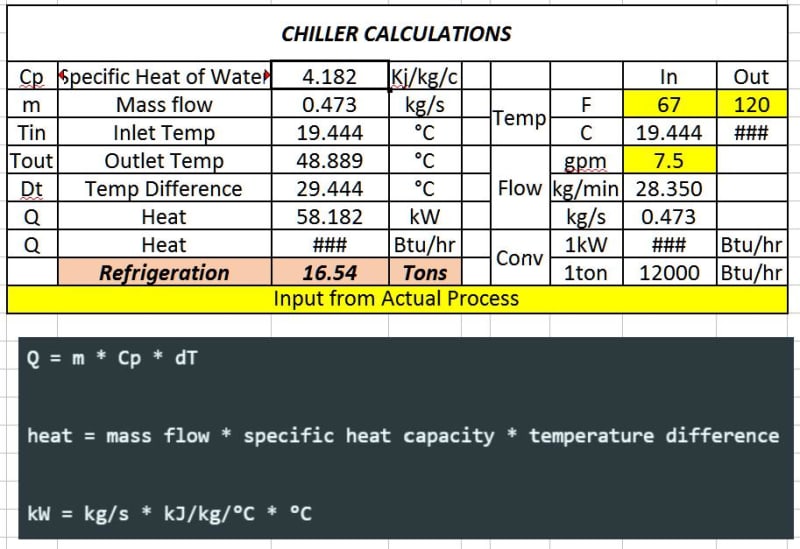I have a process running with the following thermal cooling needs:

Presently they're using city water thru a garden hose which is where they got the temp in and out and flow.
Does this look correct?
Tons, aren't those a unit over 24hrs?
Do I recall correctly that 1 Ton is about 1 Horsepower?
This process runs at most 4 hours a day.
The facility is seriously power limited while the process is running. Knowing all the above how would you providing this cooling?
Keith Cress
kcress -

Presently they're using city water thru a garden hose which is where they got the temp in and out and flow.
Does this look correct?
Tons, aren't those a unit over 24hrs?
Do I recall correctly that 1 Ton is about 1 Horsepower?
This process runs at most 4 hours a day.
The facility is seriously power limited while the process is running. Knowing all the above how would you providing this cooling?
Keith Cress
kcress -
